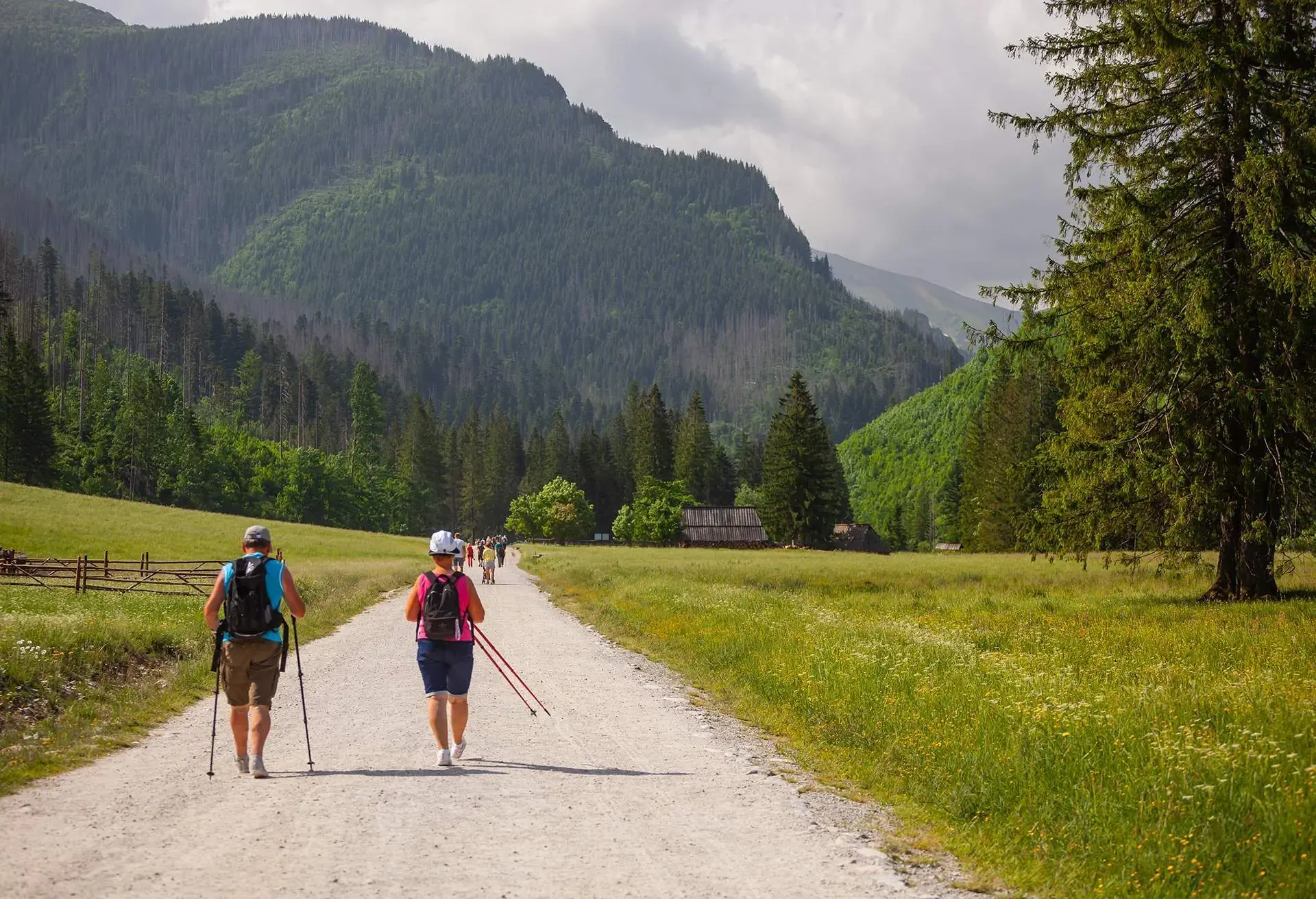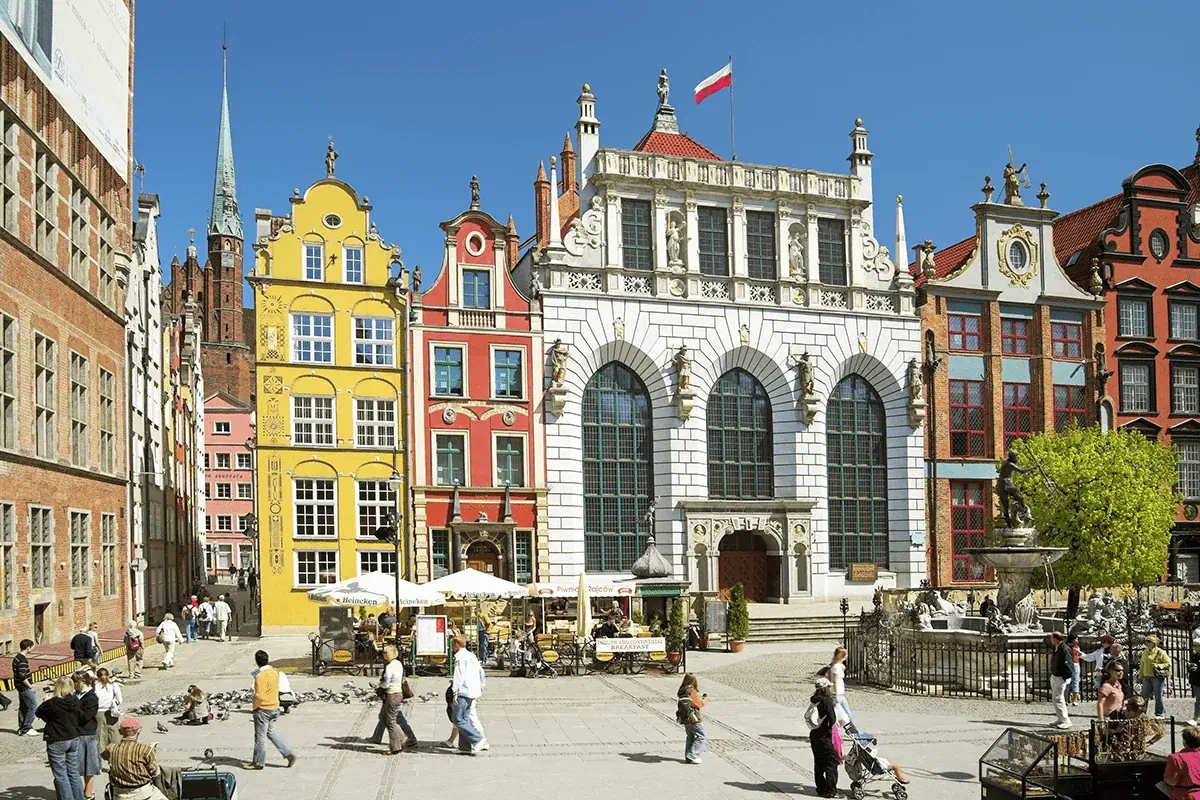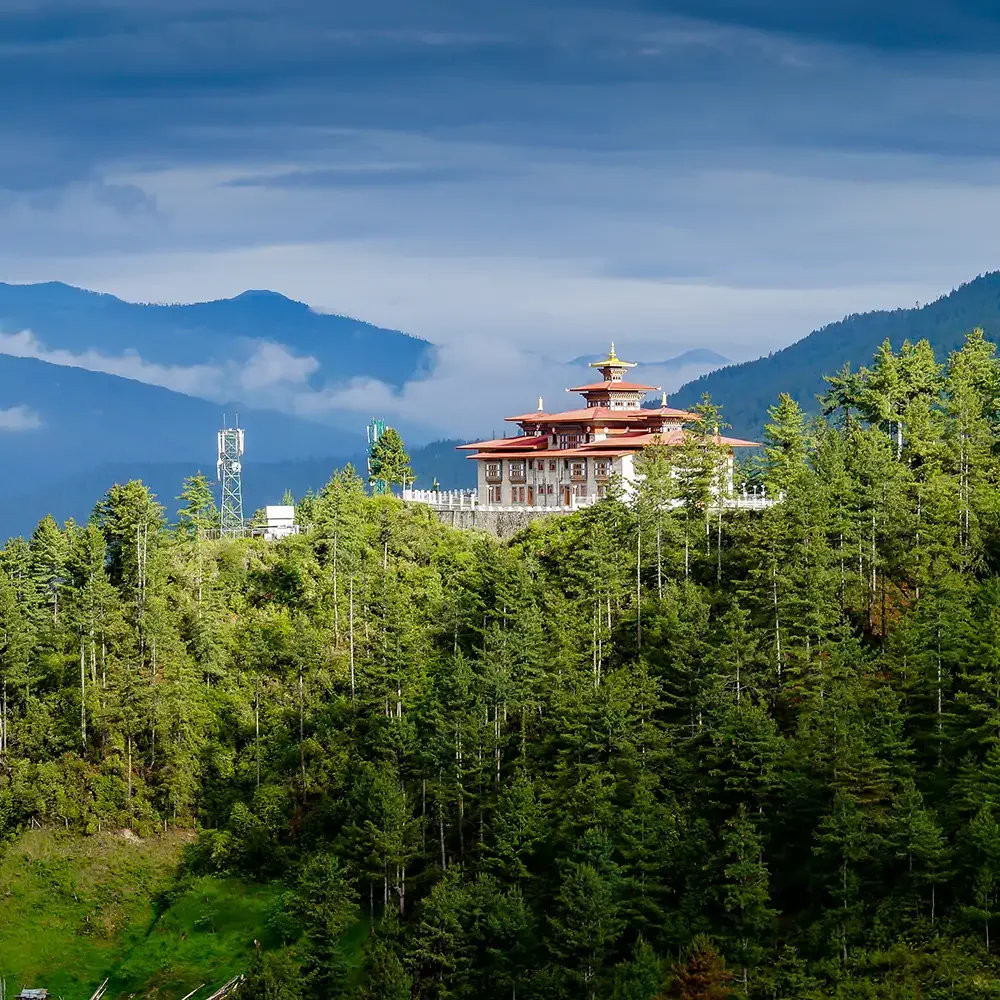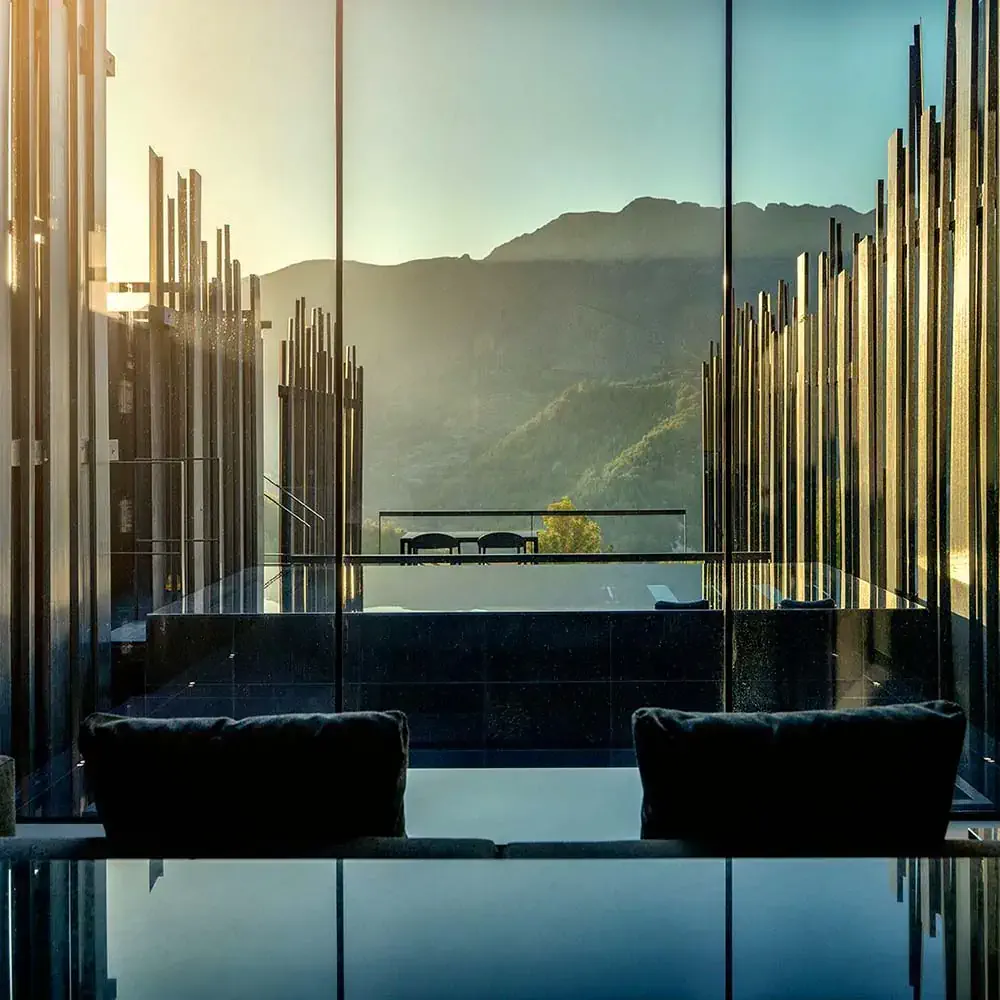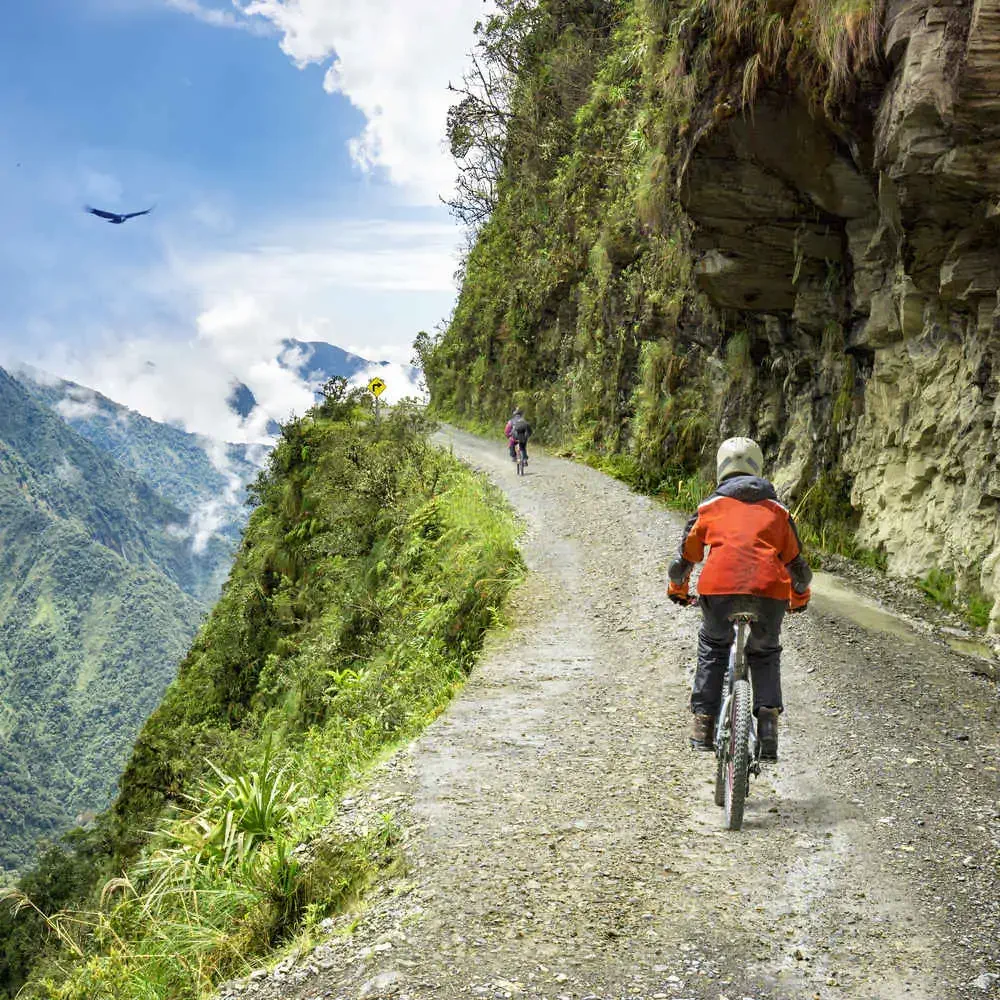For a country rich in heritage and dramatic countryside, Poland is a dream holiday destination. The Małopolska area, however, has got to be one of the most beautiful places in Poland. Surrounded by mountains, it has some of the best scenic views and is perfect for outdoor adventures whilst soaking in culture. The countryside is dotted with quaint towns in which to sample Polish culture and is packed with historical monuments and architectural wonders. Zakopane, at the foot of the Tatra Mountains, is where to head for mountain biking and skiing, whilst modern cities, such as Krakow, whose Old Town is a UNESCO World Heritage site, offer both heritage and bohemian experiences. All these make it one of the best destinations for holidays in Poland.
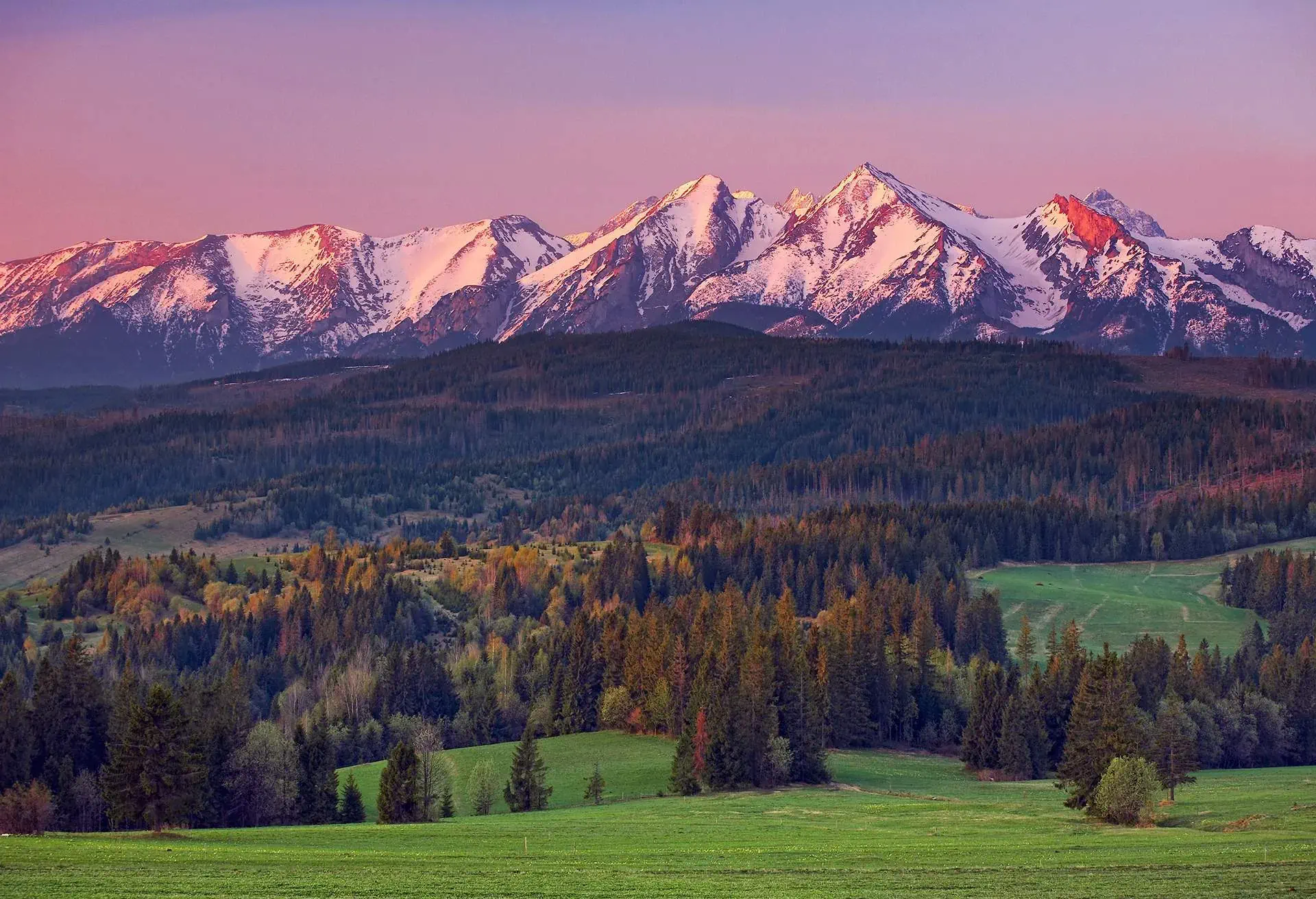
Małopolska’s city breaks
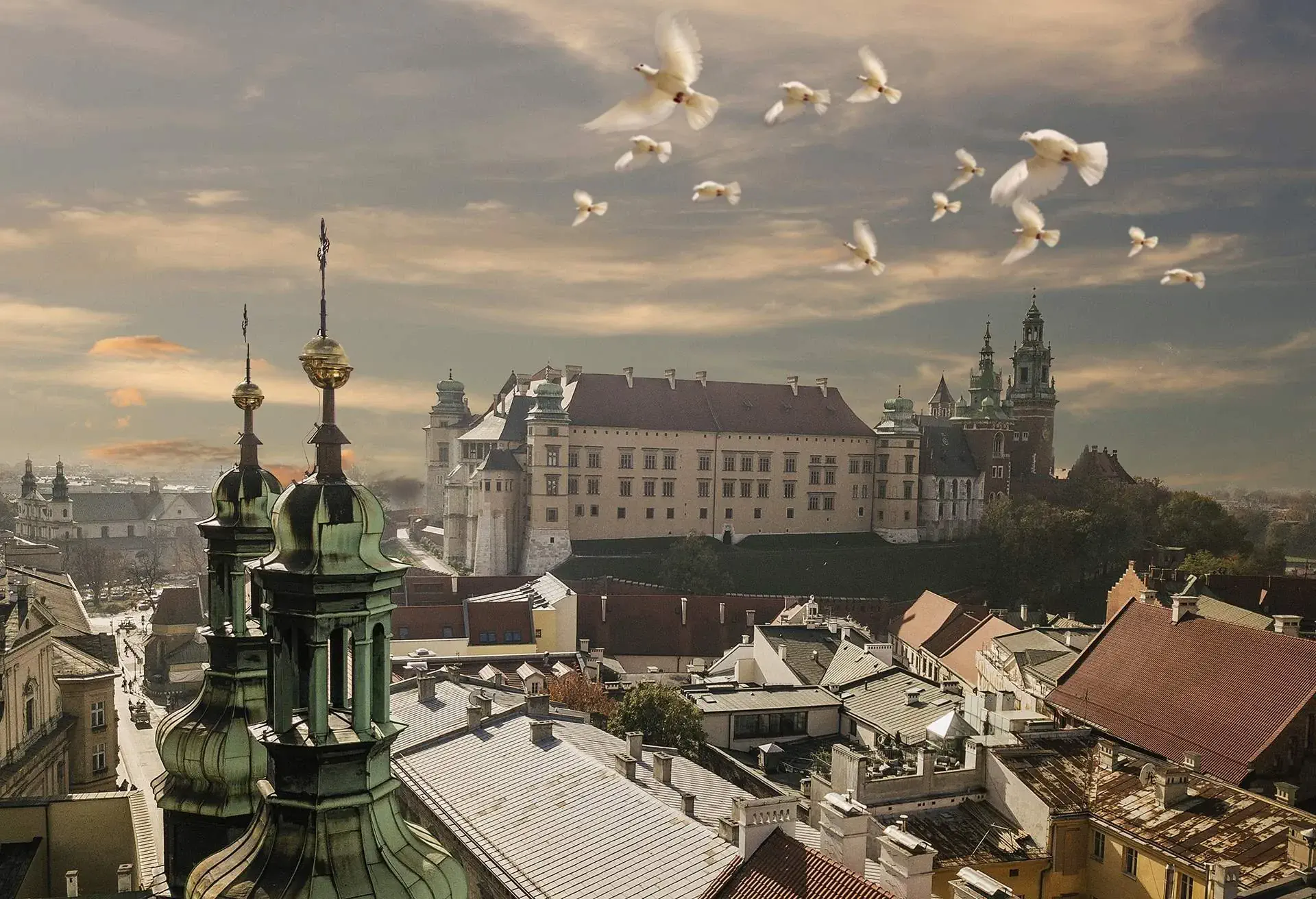
If it’s city breaks you’re after, this gateway to southern Poland has everything you could want. From cities like Krakow and Zakopane to spa resort towns like Krynica-Zdrój, you’ll find a blend of urban experiences in chic cafes and trendy restaurants as well as nature activities, historical trails and a countryside steeped in folklore.
Krakow
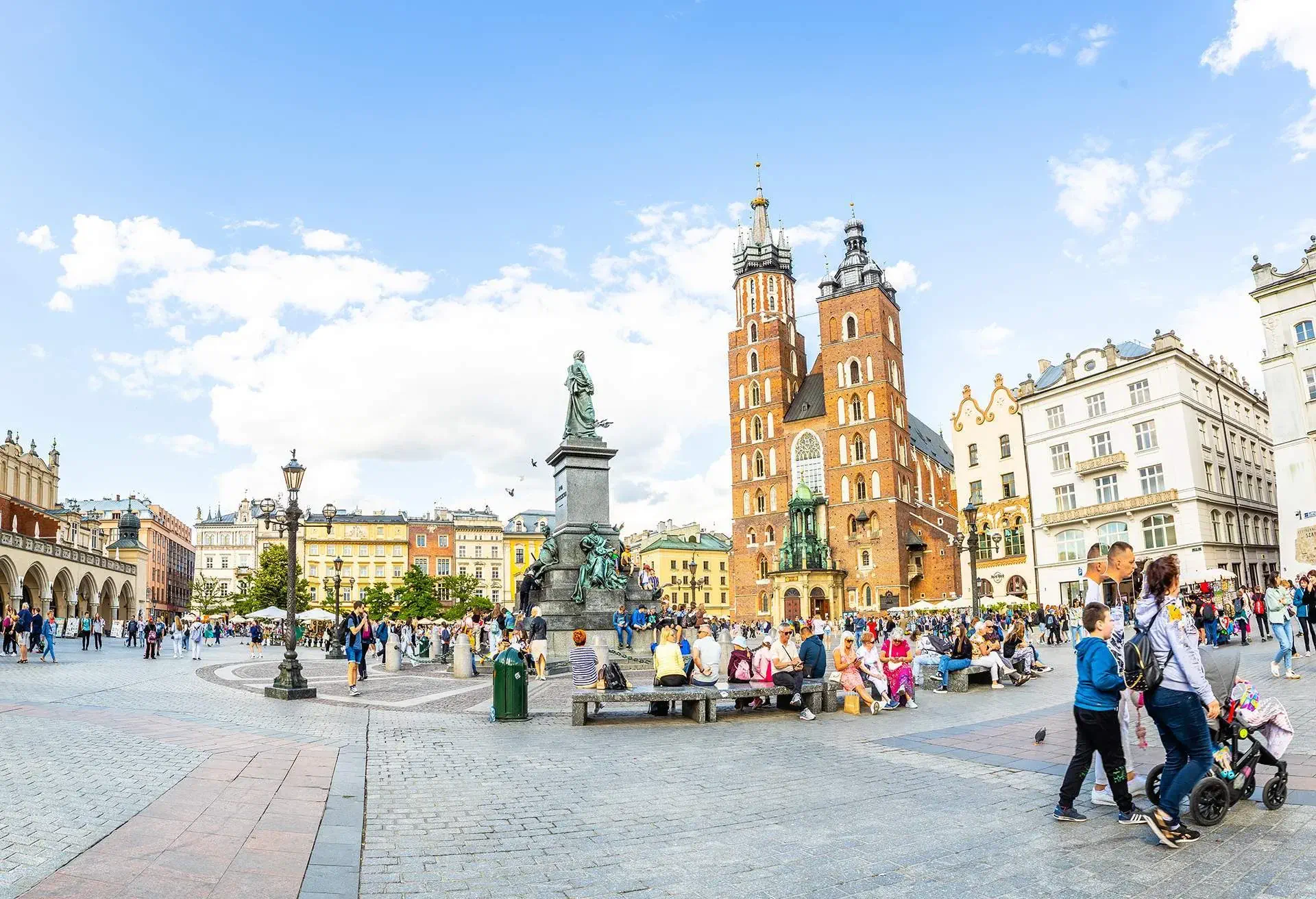
There’s no better place to start your journey than in Krakow, the former capital of Poland and a foodie’s paradise. It’s the perfect city to enjoy some of the best Polish cuisines whilst drinking in some of the country’s oldest monuments; there are many Michelin-recognised restaurants. The beating heart of the city is the Old Town, where life vibrates around Market Square. As one of the largest market squares in Europe, it’s surrounded by lavish architectural marvels and museums. Predominant is the Gothic St Mary’s Basilica, standing proudly on the northeast corner, and every hour on the hour, you can witness the sounding of the St Mary’s Trumpet which stems as far back as 1241. This beautiful trumpet melody, legend has it that it’s abrupt ending comes from a knight shot in the middle of sounding an alarm to warn the city of invaders. It’s been played that way since. Whilst Czartoryski Museum is where you can find the “Lady with an Ermine”, thought to be one of Da Vinci’s masterpieces. Bordered by outdoor cafes, restaurants, bars and clubs, it’s a modern social hub that lures you in – the perfect place to watch the world go by.
Meanwhile, if you head south from the Old Town, you come to the trendy Jewish Quarter, Kazimierz. Here, amongst cobbled streets, the old blends in perfectly with the new to lend a bohemian vibe. Browse through indie galleries and vintage clothing shops or enjoy a cocktail or two at many a shabby-chic bar, club, or underground beer den, scattered throughout the quaint streets steeped in history. It’s also where you will find the Ethnographic Museum housed in a 16th-century renaissance building with interesting folk art. Head here towards the end of June and early July, when the Jewish Culture Festival takes place. You’ll find plenty of workshops, events, and concerts livening the streets, which help you appreciate the cultural immensity of the area even more. The culmination is an outdoor concert on Szeroka Street, at the end of which stands the oldest Synagogue in Poland.
Wieliczka and the Salt Mine
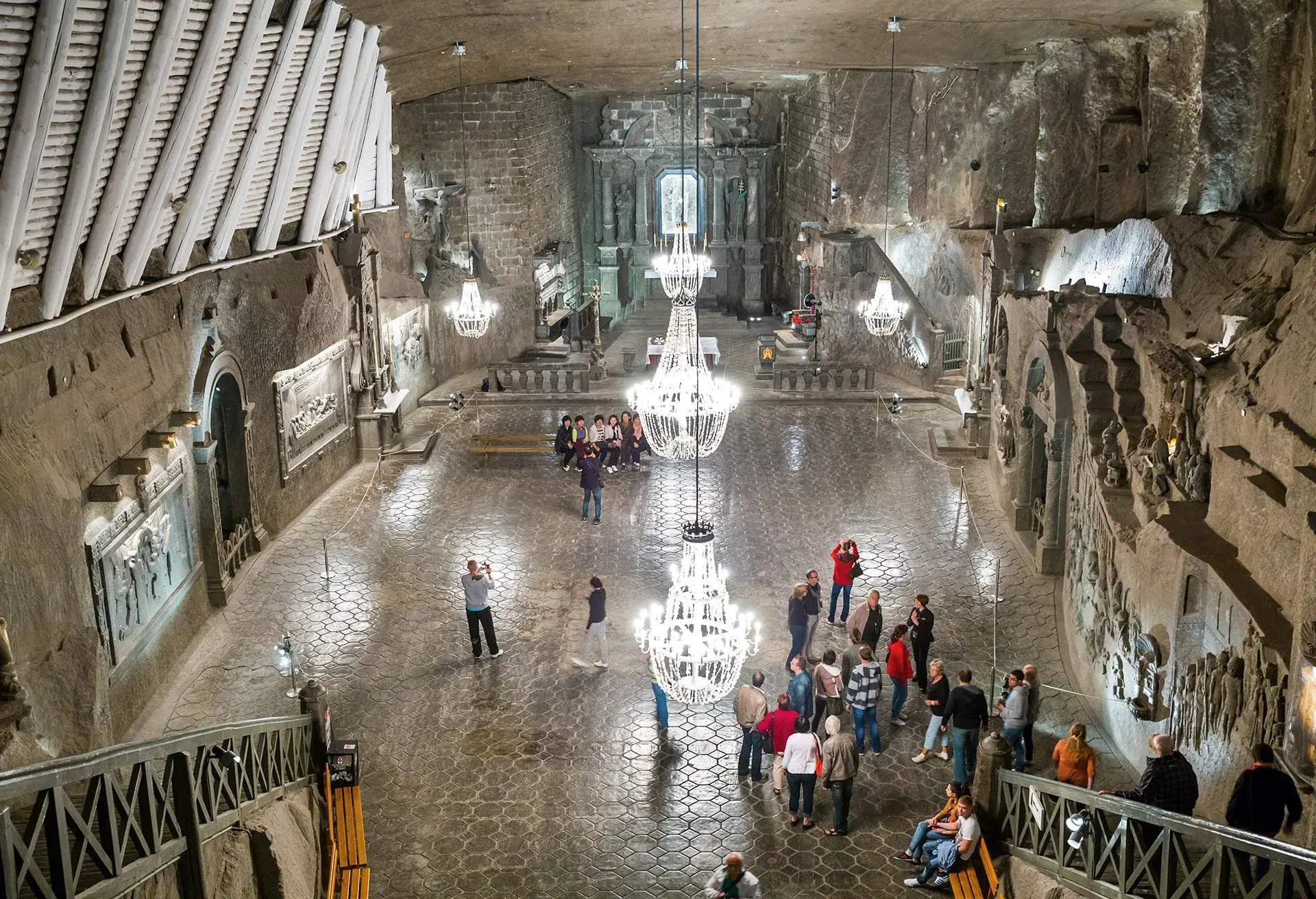
Not far from Krakow you will find the Wieliczka Salt Mine, one of the most famous mines in the world which first appeared on the UNESCO World Heritage list in 1978. A visit to the mine is an adventure like no other, albeit underground, with visitors learning about miners and the evolution of the mine through interactive activities. It’s a fun way of touring with family or a group of friends. Within a labyrinth of tunnels and salt shafts that date back to medieval times, you’ll find fascinating sculptures and relics made entirely from salt. Amongst them are several chapels, with St. Kinga’s Chapel being the most outstanding. At roughly 101 meters underground, it’s fascinating and comes complete with chandeliers, alters and many other relics and statues, all astonishingly carved out of salt. Most notable are that of Pope John Paul II and a bas-relief depicting Leonardo da Vinci’s Last Supper.
If you’re looking for unique experiences, then further down the Mine is a resort with a difference. Located around 135 metres below ground, Wieliczka Salt Mine Health Resort utilises salt in its treatment, especially for respiratory ailments. Head to the nearby Saltworks Castle, a 13th-century castle that was once the administrative seat of Wieliczka and is a fine example of early modern medieval architecture. It’s earned its place on the UNESCO World Heritage list and now houses a museum with a lavish collection of salt dispensers amongst other things mining. From health and beauty products such bath salts to crafted items made out of salt including salt lamps, a visit to the Wielczka Salt mine is your opportunity to stock up on souvenirs to treat yourself with or as gifts for friends and family.
Bochnia Salt Mine
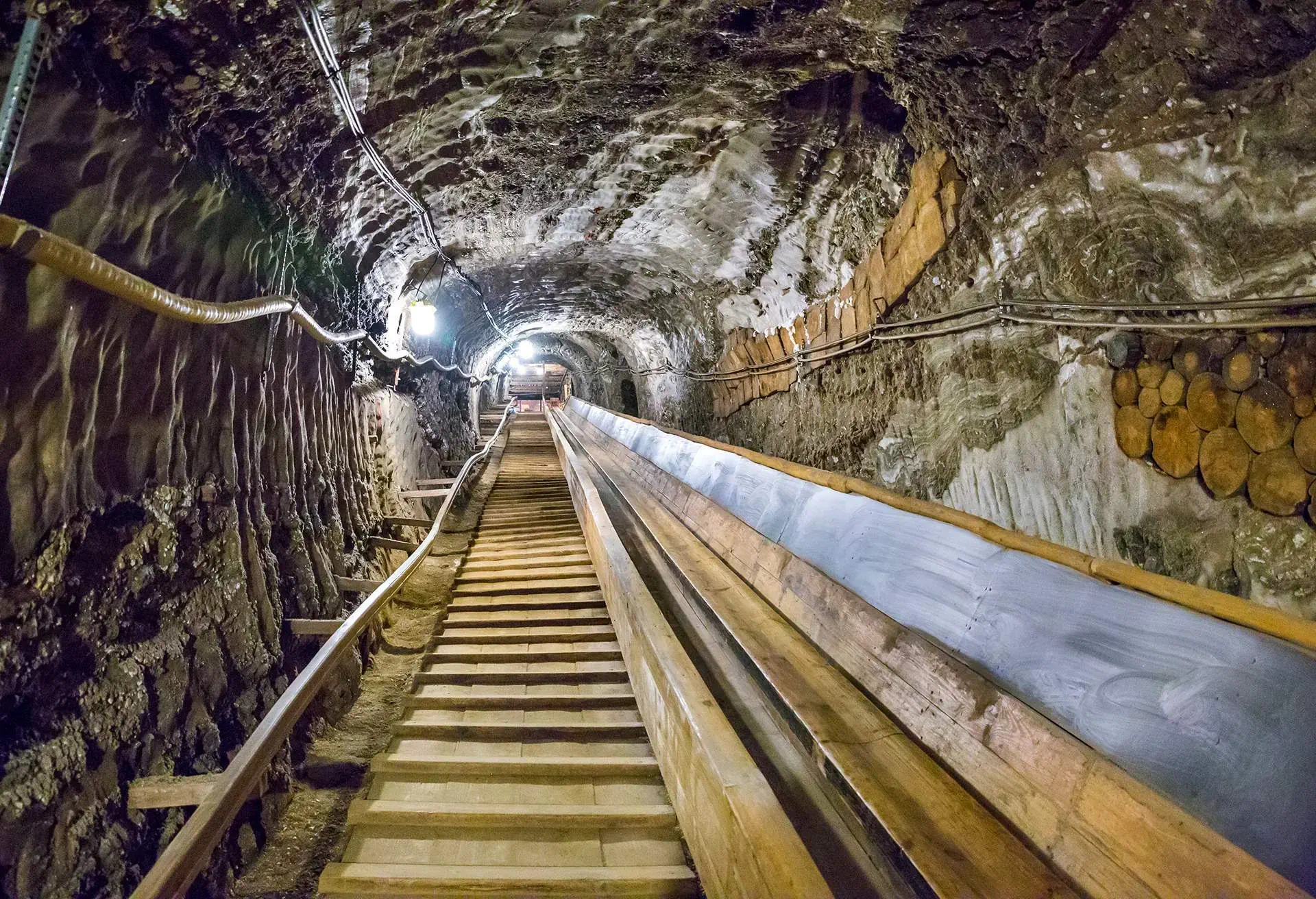
Not far from Wieliczka is Bochnia and the Bochnia Salt Mine. One of the oldest salt mines in Poland, it’s also on the UNESCO World Heritage list and was declared a Monument of History in 2000. Here, the world of mining and life of miners is offered on three different routes which allow the visitor to explore the caves however they like (even using boats) and can be tailored for all ages. The ‘shining salt crystals’, a fluorescent light display, is a major attraction that will entertain all ages. Once here, there are underground trains and ferries to ride anywhere, but the largest chamber, the chamber of Wazyne is where you can find sports fields, restaurants and even a mini playground. A visit to the Bochnia Salt Mines is a unique experience that can only be found here.
The Wooden Architecture Route
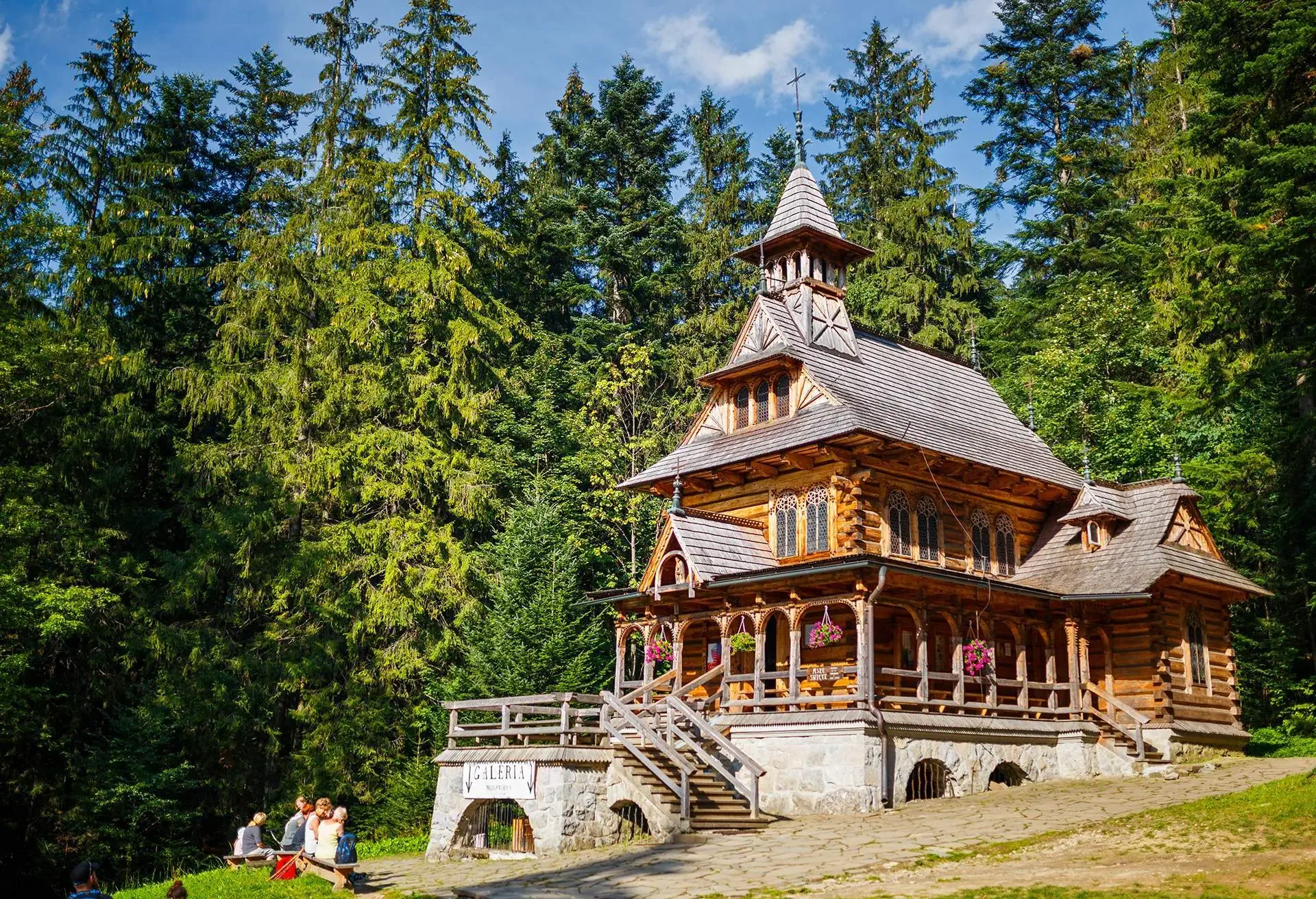
For lovers of architecture, Małopolska’s Wooden Architecture Route is one of the best exposures to the diverse and unique architecture Poland offers. On a route that stretches over 1,500 km, there are over 200 architectural sites that have withstood the test of time and give a glimpse into Polish culture. It truly is one of the best ways to explore the region. From Romanesque to Gothic churches, you will also find abbeys, palaces, and manor houses, many located in Provincial towns with a surprisingly urban layout. Four towns and villages, home to the best wooden churches on the route are found in Binarowa, Lipnica Murowana, Sękowa and Dębno Podhalańskie. Perhaps outstanding amongst them is the Church of St Michael the Archangel in Debno Podhalańskie, one of the oldest wooden churches in Poland, even more outstanding in that it was built without a single nail. All churches from the Wooden Architecture Route are included on the UNESCO World Heritage list, with some dating as far back as 1141. Make sure to make a stop as well at the open-air Vistula Ethnographic Park Museum in Wygiełzów, which is located at the foot of the Lipowiec castle. At this open-air museum, though constructed in 1968, all the wooden structures and objects within it have been carefully sourced and date as far back as the early 17th century. If you are touring the route by car, or why not hire one anyway, plan your visit for the springtime, and travel further inland to the Chochołów valley in the Tatras. It is the longest valley in the Tatras and has some of the best Crocus blooms you’ll find anywhere.
Equally as interesting as the churches on the wooden architecture route, are the extremely picturesque Orthodox churches with their magnificent historical polychromes and traditional shingle-covered domes, hidden among flowering fields throughout the region. We especially recommend the churches in Kwiaton and Owczary, which are also on the UNESCO World Heritage List.
One of the most beautiful places in Poland: Zakopane
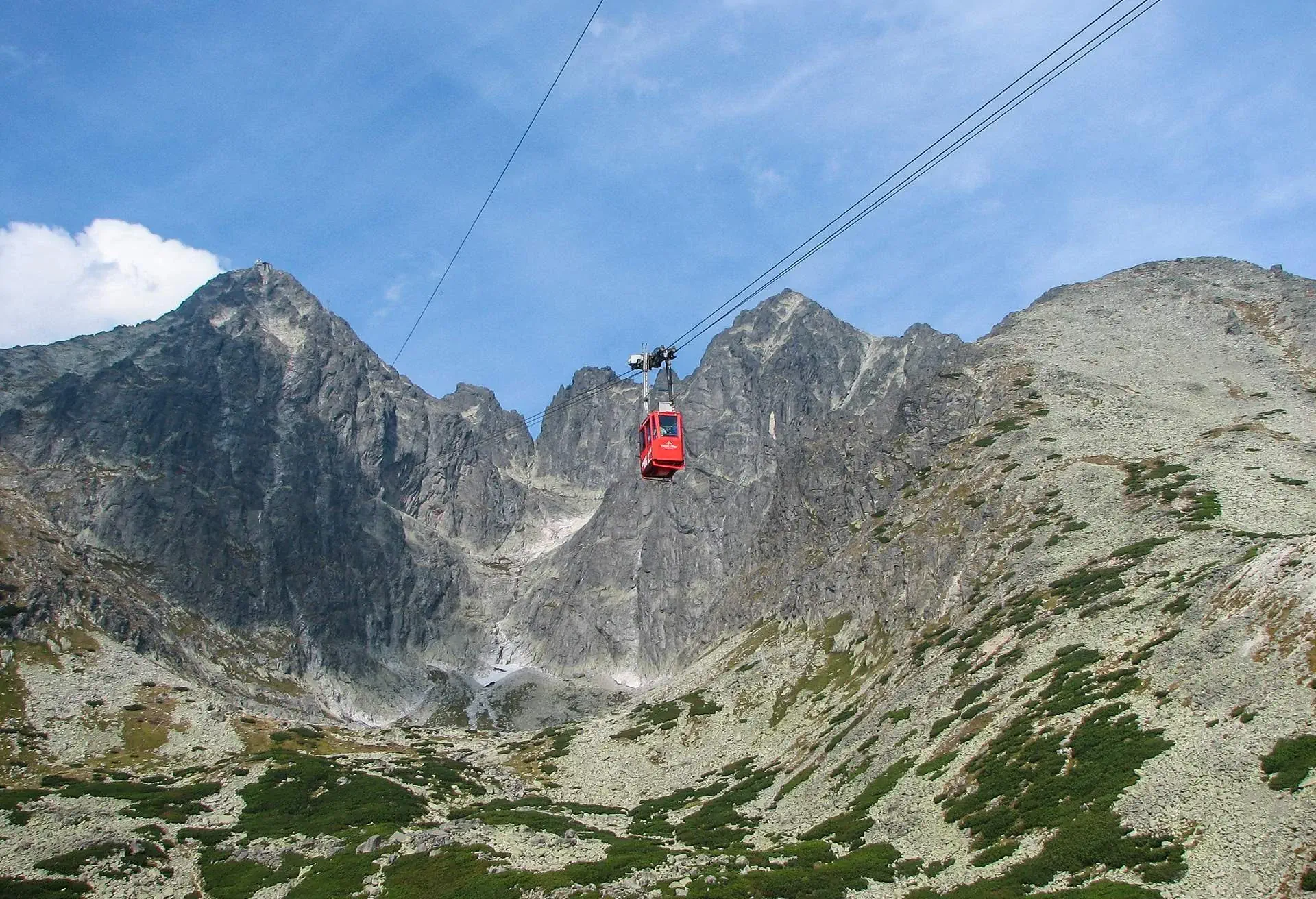
In the meantime, Zakopane, at the foot of the Tatras, is the ideal city break destination for outdoor experiences all year round. Some of the best Poland scenery can be found here. It is the perfect base for walks into the Tatra valleys and hikes up the mountains during the summer months, with many guided tours available. Here you can discover one of the most beautiful lakes, so declared by the Wall Street Journal, the Morskie Oko, or Eye of the Sea. It has a unique position on high ground, unlike many lakes, within the Rybiego Potoku Valley. If, however, you prefer a more sedate way of enjoying the outdoors, then the 2,000-metre-high cable car from Kuznice to the top of Mt. Kasprowy Wierch is just what you want.
The town itself centers around Krupowki Street, probably one of the most famous streets in Poland. It oozes charm and pulsates with activity, with traditional Zakopane-style architecture commonly known as the Witkiewicz style. This style of building, using mainly wood was brought to the area by one Stanislaw Witkiewicz who settled in these parts in 1890 for health reasons. A prime example of his work can be found on Koscieliska Street, the Koliba Villa now a museum, and the first building to have ever been built in this style. It forms part of the Tatra Museum found on Krupowki Street, museums dedicated to documenting and preserving the history, culture, and nature of the Polish Tatras. Krupowki Street is where you’ll find everything from restaurants and cafes to traditional street stalls selling the famous cheese of the area: oscypek. When winter arrives, these mountains are perfect for skiing; it has held several ski jumping world cups, with slopes ideal for both beginners and those with advanced skills.
Krynica-Zdrój
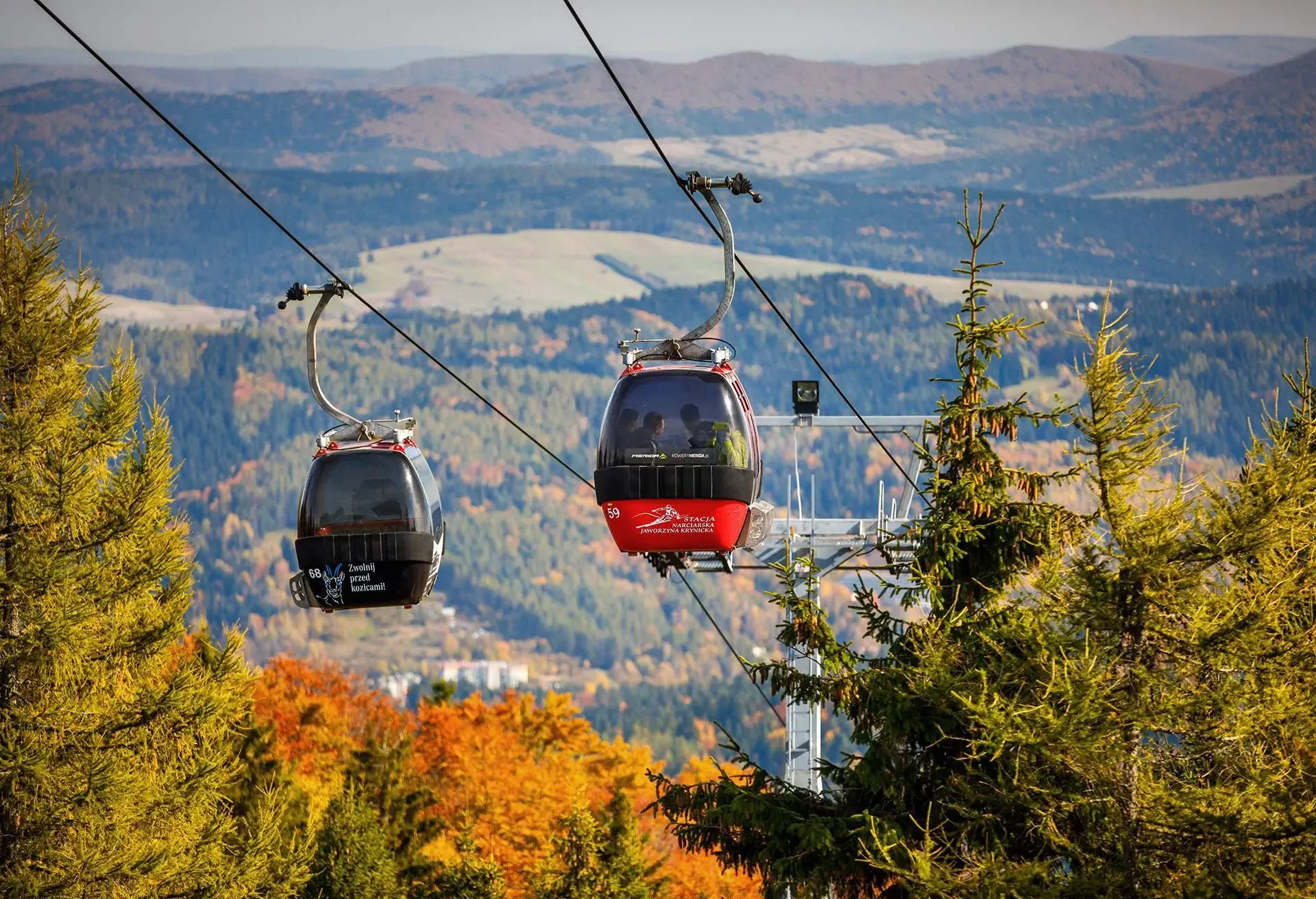
Many a city break is about recharging, and it doesn’t get better than Krynica-Zdrój. Nestled within the Beskid Sadecki mountain ranges in Nowy Sacz, this mountain resort is one of the largest spa towns in Poland and where to head for some pampering. With a reputation dating back to the 19th century due to the exceptional healing qualities of the mineral waters and therapeutic mud found here (it has even attracted aristocracy), you will be following in good company. Almost every hotel has a spa and wellness centre.
That isn’t all the resort town has to offer. Immerse yourself in some culture at Villa Romanowka, which features artwork by Nikifor, one of the world’s finest naïve painters, whose works took influence from the surrounding areas. If you head here in the summer months, you can take part in the Jan Kiepura European Festival, one of Poland’s biggest festivals. It features a wide range of activities, including ballet, film, opera, symphony music and theatrical performances.
It would be a travesty to come all this way and not head into the mountains. The view from the Slotwiny Arena Observation Tower, in the centre of the Jaworzyna Krynicka forest, is breathtakingly panoramic. Additionally, the wooden walkway that leads up to it is a bucket list experience; it’s called “the path in the clouds” and is just under 50 metres high.
Jura Krakowsko-Czestochowska
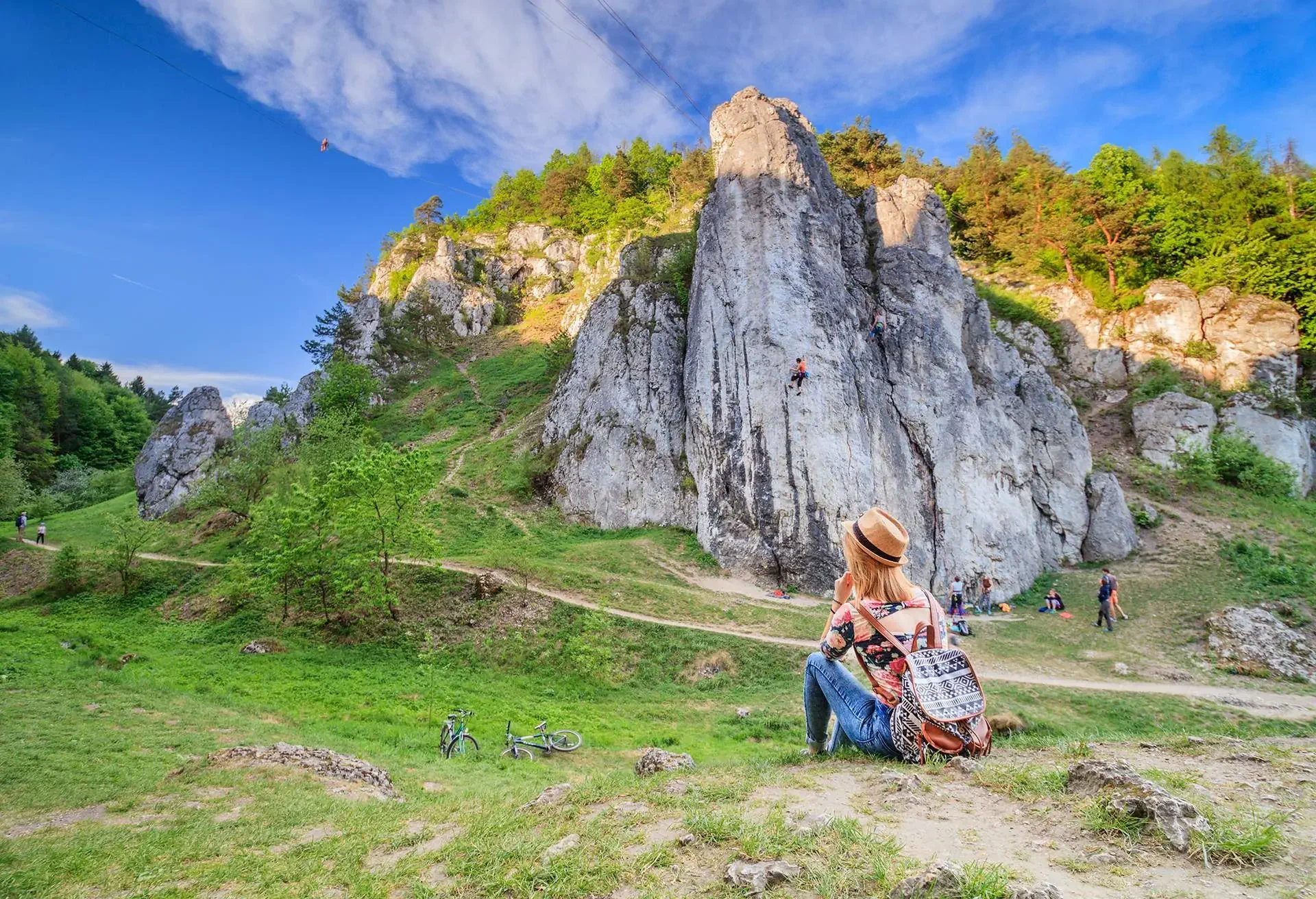
If you like the outdoors, there is no better place to head to in Poland than the Jura Krakowsko-Czestochowska, also known as the Polish Jurassic Highland. It is a celebration of Poland’s nature and is characterised by the limestone rocks dating to the Jurassic period, hence the name. Stretching between Krakow and Czestochowa, it is one of the most interesting and stunning places to visit in Poland.
Caves
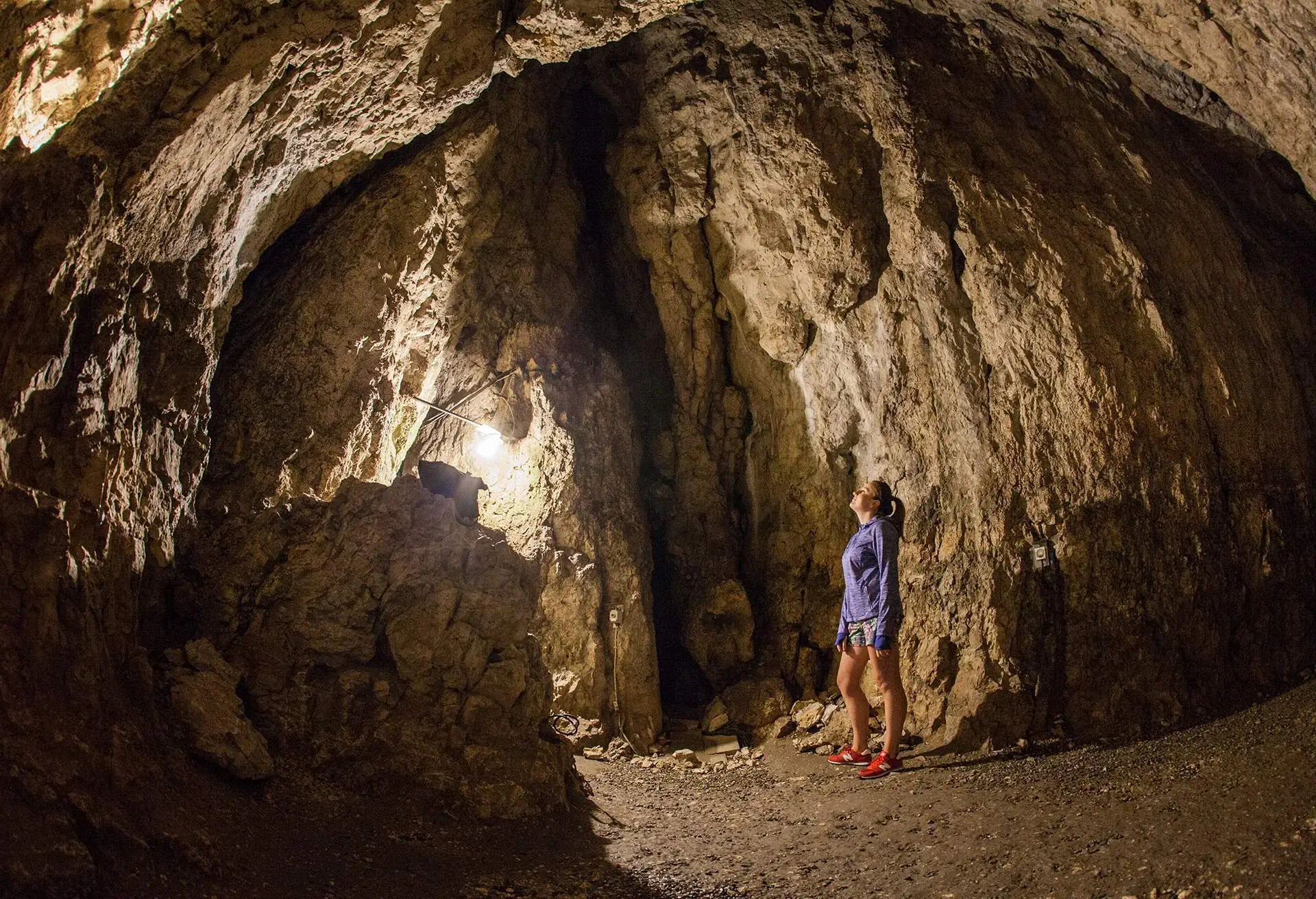
Whether a speleologist or just interested in caves, head to Małopolska where you will be spoilt with an underground world of unique stalagmites and stalactites. There are as many as 12 of the 22 caves in found in Poland here. Head to the Krakow Valleys Landscape Park where you’ll find the largest of the most accessible caves, the Upper Wierzchowska Cave. Also worth a mention are the Elbow-High’s Grotto (Grota Łokietka) in the Chelmowa Mountain and the Bat Cave. It’s thought the latter, only possible to visit with a guide, is where some flint arrowheads and javelins made by the first humans have been found and the set for the film With Fire and Sword. However, it is at the Dark Cave in the Ojcow National Park, where there is an archeological site with evidence of prehistoric existence. While here, don’t miss out on seeing Hercule’s Club, the Maczuga Herkulesa, so named because of the shape the 30-metre-high limestone rock forms.
Mountain Climbing and Biking
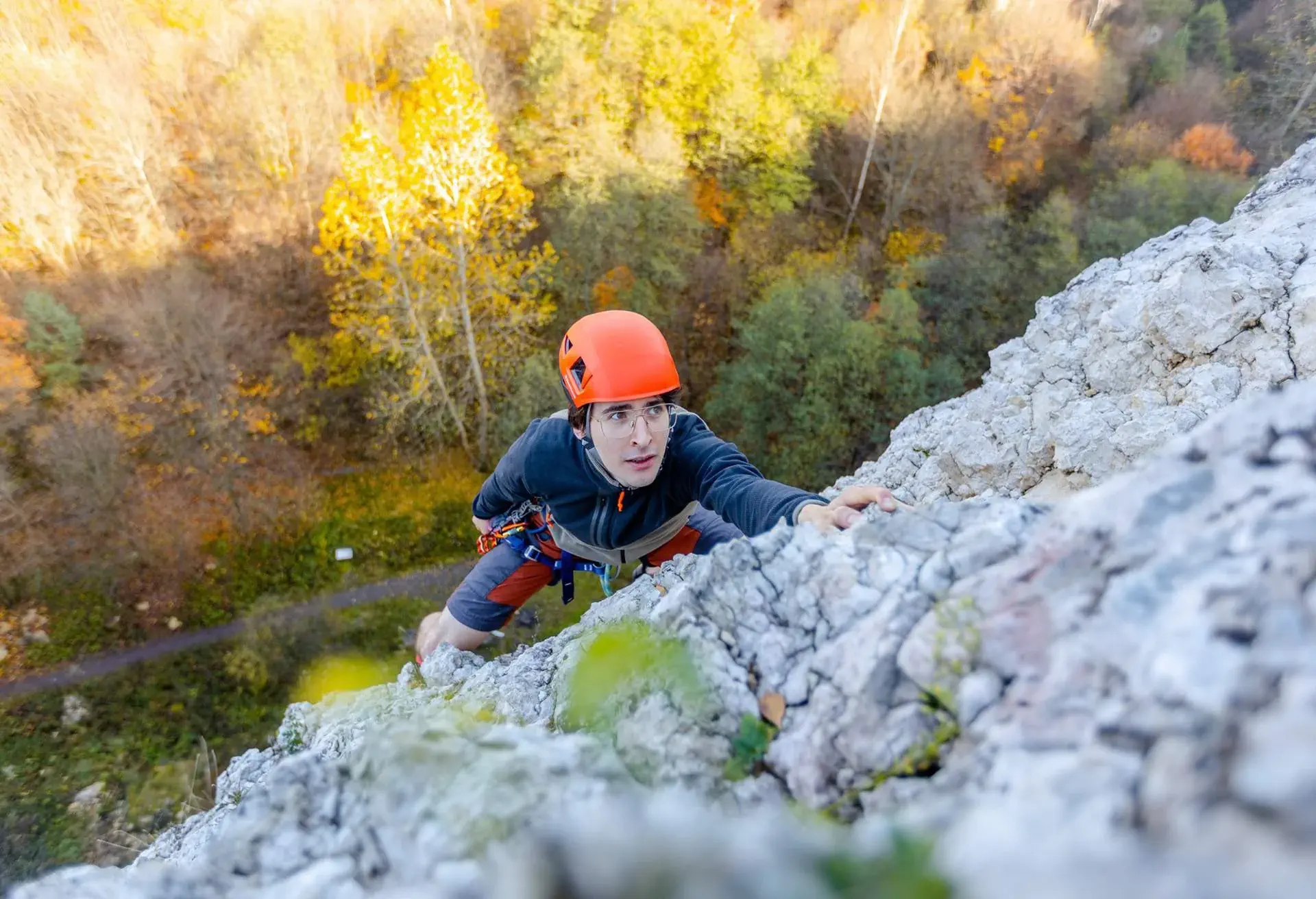
The white limestone monadnocks of the Jura Krakowsko-Czestochowska, unque to this area, have long attarcted rock climbers and are great especially for those with advanced skills. Popular areas to head to include the Rock City of Podzamcze in Ogrodzieniec, the Kroczyce Rocks in Kroczyce or the Podlesice and Rzedkwice. Quarry climbing has also become popular in these regions, well-liked by locals are the Lebanon and Krzemionki quarries. The most popular amongst avid climbers, is the Zakrzowek quarry which is thought to have been first scaled over 100 years ago.
As for keen cyclists, a part of the Red Cycling trail, a cycling trail from Krakow to Ogrodzieniec which takes up to four days to complete, goes through the Jura Krakowsko-Czestochowska region. It forms part of the Eagle’s Nests Bicycle route that cuts through the park from the south to the north. This is the perfect route to take for avid cyclists as apart from the beautiful scenery, you also get to see the castles on the route between Krakow and Czestochowska.
Aim to get here in late September, when the Juromania Festival takes place. Over three days, the villages in the area take on a carnival-like atmosphere with historical re-enactments, traditional dance and music shows a plenty. Probably one of the best ways to immerse yourself in Polish culture is through folklore and food.
Castles and ruins
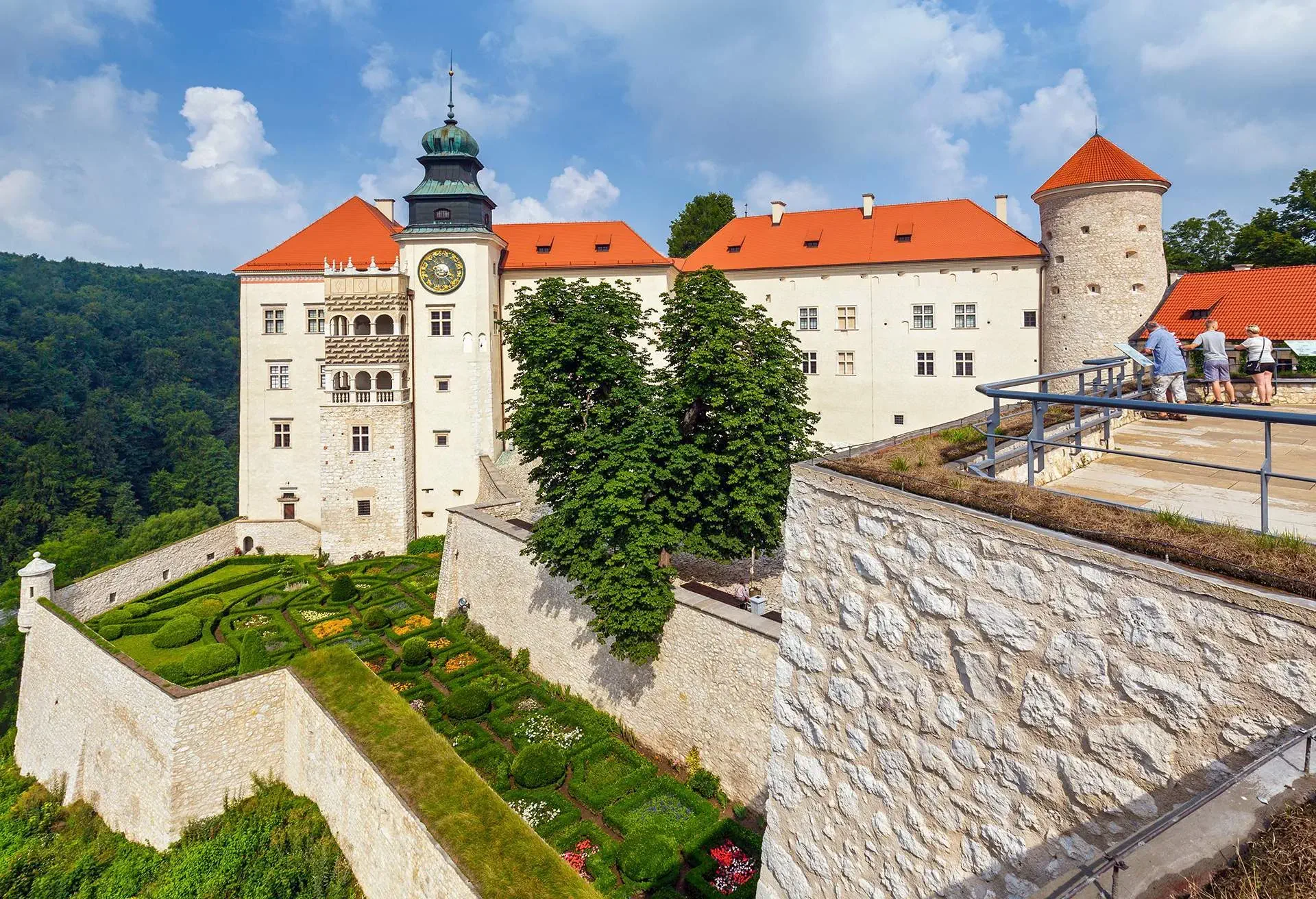
Małopolska is that fairy tale land of enchanting beauty that lures you in. The undulating countryside is dominated by the Eagles’ nests, castles perched on towering limestone rocks that surround the region, very much like eagles’ nests. These castles were built to guard these lands and the trade routes of Krakow and Małopolska. Today, they are one of the biggest tourist attractions to the region. The best examples, and those that should be included on your list of castles to visit in Małopolska include the castle in Pieskowa Skala. Originally erected in the 14th century, it was given a Renaissance make-over, modelled on the royal Wawel Castle, by Italian architects 200 years later. Now you’ll find a well-preserved castle with an arcade-like courtyard, and an Italian garden terrace with breathtaking views over a cliff. Whereas on the outskirts of Ojcow National Park stands a 15thcentury knight’s castle with a high tower offering panoramic views. Not to be missed are the castle ruins in Ojcow itself and Rabsztyn.
Bledowska Desert
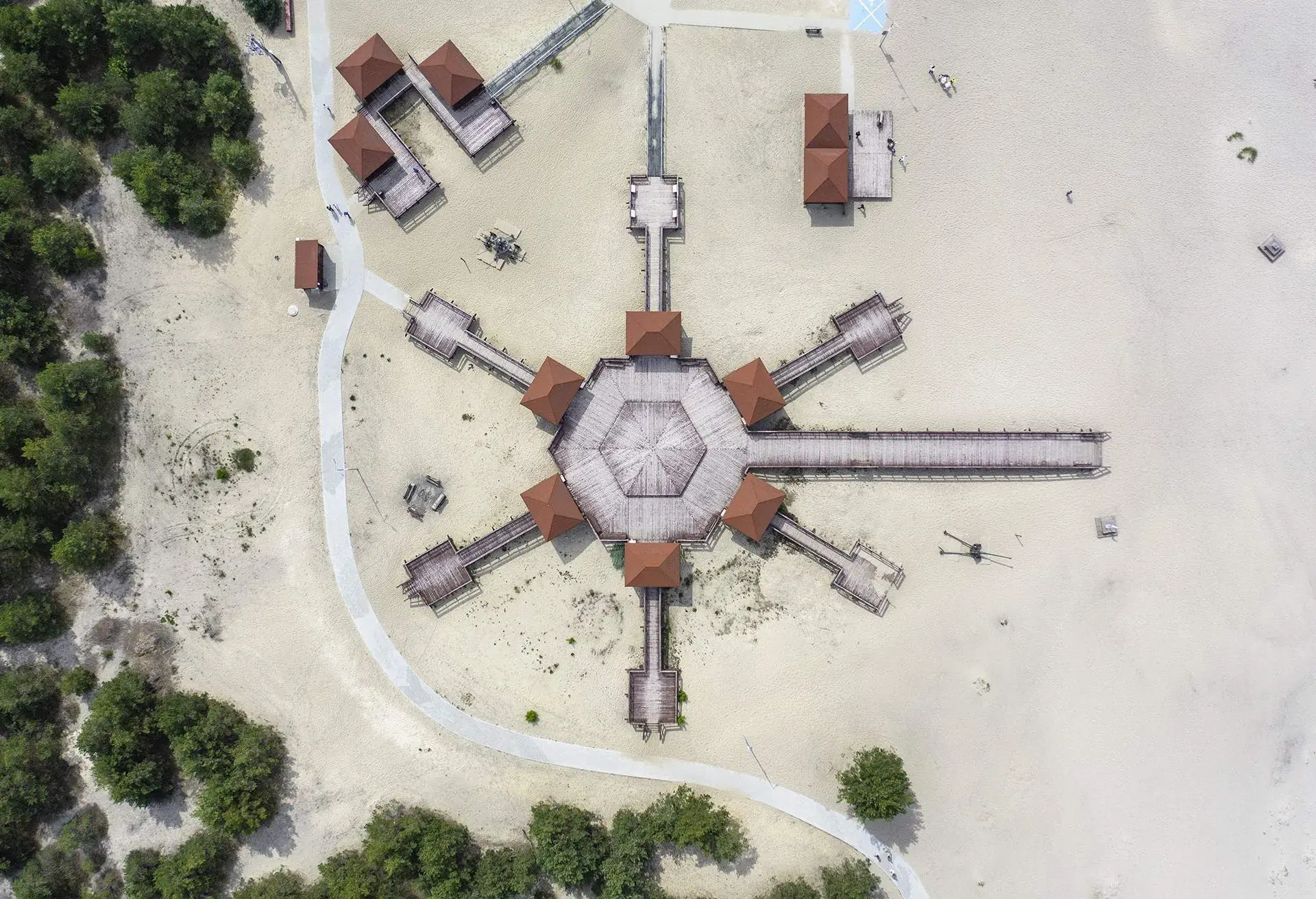
The Polish Jura is also the location of the Bledowska Desert. Nicknamed the ‘Polish Sahara’, it’s found within the Eagles’ Nests Landscape Park on the Silesian and Olkusz Uplands border and is divided in two from the east to west by the river Biala Przensza. This stunning desert made of quicksand covers an area of around 32 square kilometres, and is so unique in Europe, therefore a must visit. One of the best places to better appreciate it in its entirety is at the Czubatka viewpoint in Klucze. Standing at a whopping 382 metres above sea level, it offers stunning sunset views and has a picnic area you can use. Also in Klucze, and probably the most wheelchair friendly, is the more recently erected Róża Wiatrów. Taking its name from the rose shape the wooden structure forms. Otherwise, the Dabrowka viewpoint in Chechlo comes with the added advantage of seeing the remains of a bunker.
The desert is surrounded by a beautiful forest that is great for walks, hikes, and horseback riding. Get fully immersed in the region’s beauty on horseback. The Krakow to Czestochowa Equestrian trial, (the Orange trail), takes up to eight days and gives you the opportunity to immerse yourself in what the region has to offer. Whereas if cycling is more your thing, the desert forms part of The Desert Trail (a cycling trail) and takes two days, taking in Bledow, Klucze, Jaroszowiec and Olkuski. A walking trail that runs the whole width of the desert can be accessed from Gorna Street in Klucze; the entry is by the car park near the Czubatka viewpoint. Otherwise, sink your feet into the quicksand and go with the flow.
Amidst the grass of the Błędowska Desert you may sometimes come across a bug known as the Polish woodworm. This particular worm, sometime in the 16th century, was specifically bred to obtain the red dye (cochineal) used in fabrics. Even though no longer used extensively, Poland was the main supplier of the dye in Europe.
Folklore
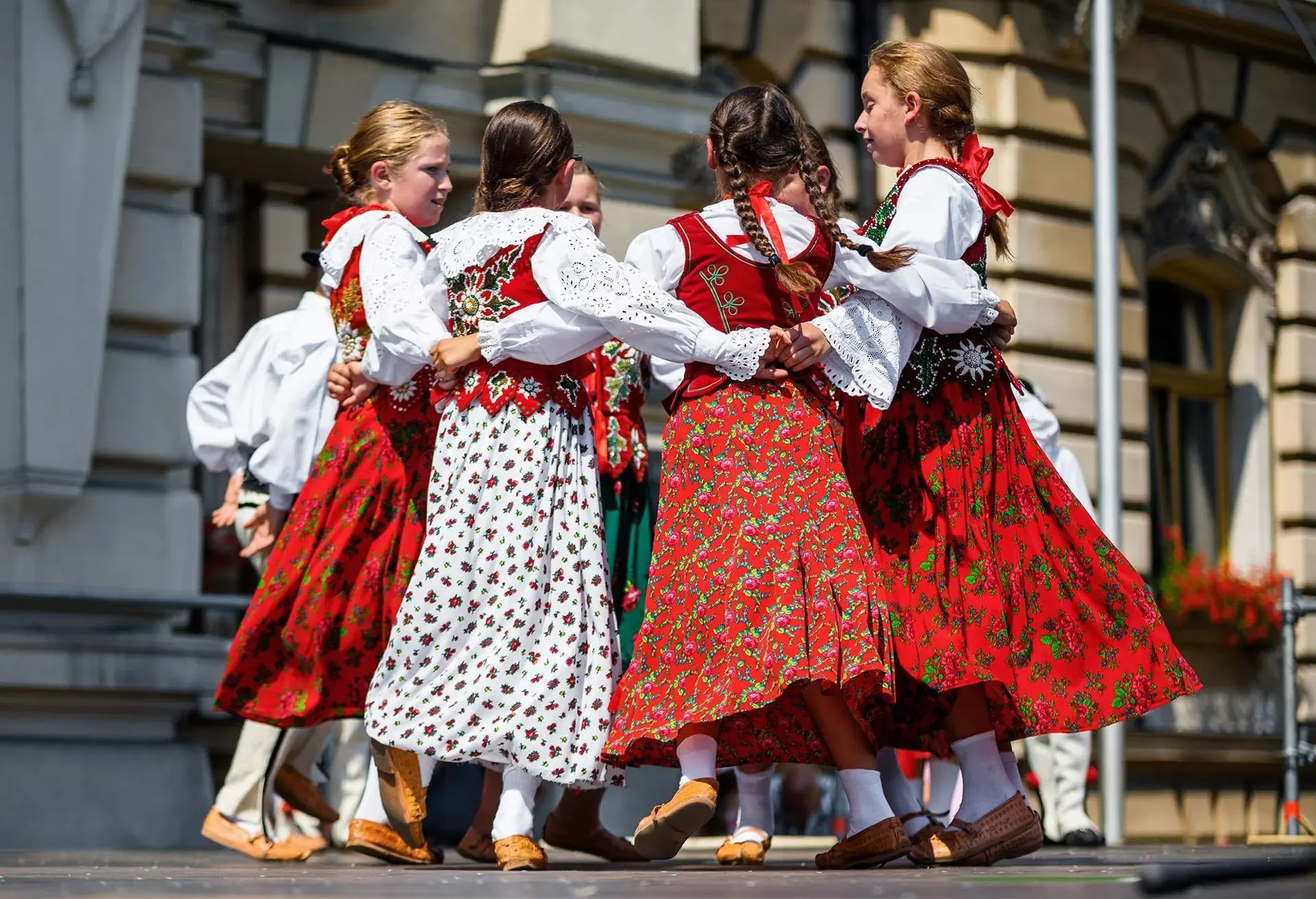
It goes without saying that a visit to Małopolska is an opportunity to see highlanders in traditional costumes up close, often characterised by breeches with marzenica or hats with feathers and even kierpce on the feet. Examples of the more vivid ones include: the Painted flowers (modelled after Zalipie), handmade lace (modelled after Bobowa’s lace). In Kraków for example, you’ll find swashbuckling costumes with magnificent peacock feathers next to a red cornet, while the girls sashay in flowing flowery skirts with shimmering corsets. Every year in June, on the first Thursday after the Corpus Christi feast, the Lajkonik festival takes place on the streets of Krakow. It is the ideal time to travel to Krakow to see one of the many folklores Małopolska is known for first-hand. Officially the symbol of Krakow, you’ll find a man dressed in traditional costume, with a pointed hat and a wooden horse around his waist riding along the streets dispensing good luck with his golden mace. It’s a wonderful time to be here when the streets assume a carnival-like atmosphere.
However, it isn’t only folk costumes that tell the traditions and culture of the region. There are still many traditions, customs and legends still practised today. The Wawel Dragon, or the ring of St. Kinga, a lump of salt in the Wieliczka mine are good examples of some.
You also find customs recreated in wonderful regional products, traditional dishes, and in architecture. Visit during the Małopolska Taste Festival which takes place in the summer months. It is the perfect opportunity to sample some of the best foods Poland is known for, like the kołacz, which in the old days was reserved for special occasions like weddings. From hearty stews like the kwasnica to delectable cheeses, a taste of the local the Tatra is known for, the oscypek or have it served hot with a cranberry is unforgettable, otherwise have it as it is, scented with campfire ash. Indulge in delightful pierogi with different fillings depending on regions or the Kremowka cake, wafer thin layers of puff pastry encasing either cream or custard, so renamed as it was Poland’s most beloved son’s favourite cake, the late Pope John Paull II. If you’ve ever wondered what a braided donut would taste like, then try the obwarzanek, it’s believed even the Wawel Dragon, (a fearsome legendary dragon that terrorised Krakow whose monument still stands at the foot of Wawl Hill), ate it. Discover all its secrets and how to make it at the Obwarzanek Krakowski Museum in Krakow. It’s bound to capture the children’s imagination.
Down in the Podhale region of the Tatras, you’ll find a hardworking, mountaineering group of people, the Gorale. They have a penchant for music and dance. They are responsible for a popular dance found throughout Poland: the Góralski. A tale of love and rivalry, it’s performed by both men and women through intricate steps and elaborate costumes decorated in beads and sequins, in patterns that draw inspiration from the plants and flowers of the region. This element can also be seen in everyday modern wear, whilst many of the wooden houses in the area are still built by hand in the traditional style.
Exploring wider Poland with momondo
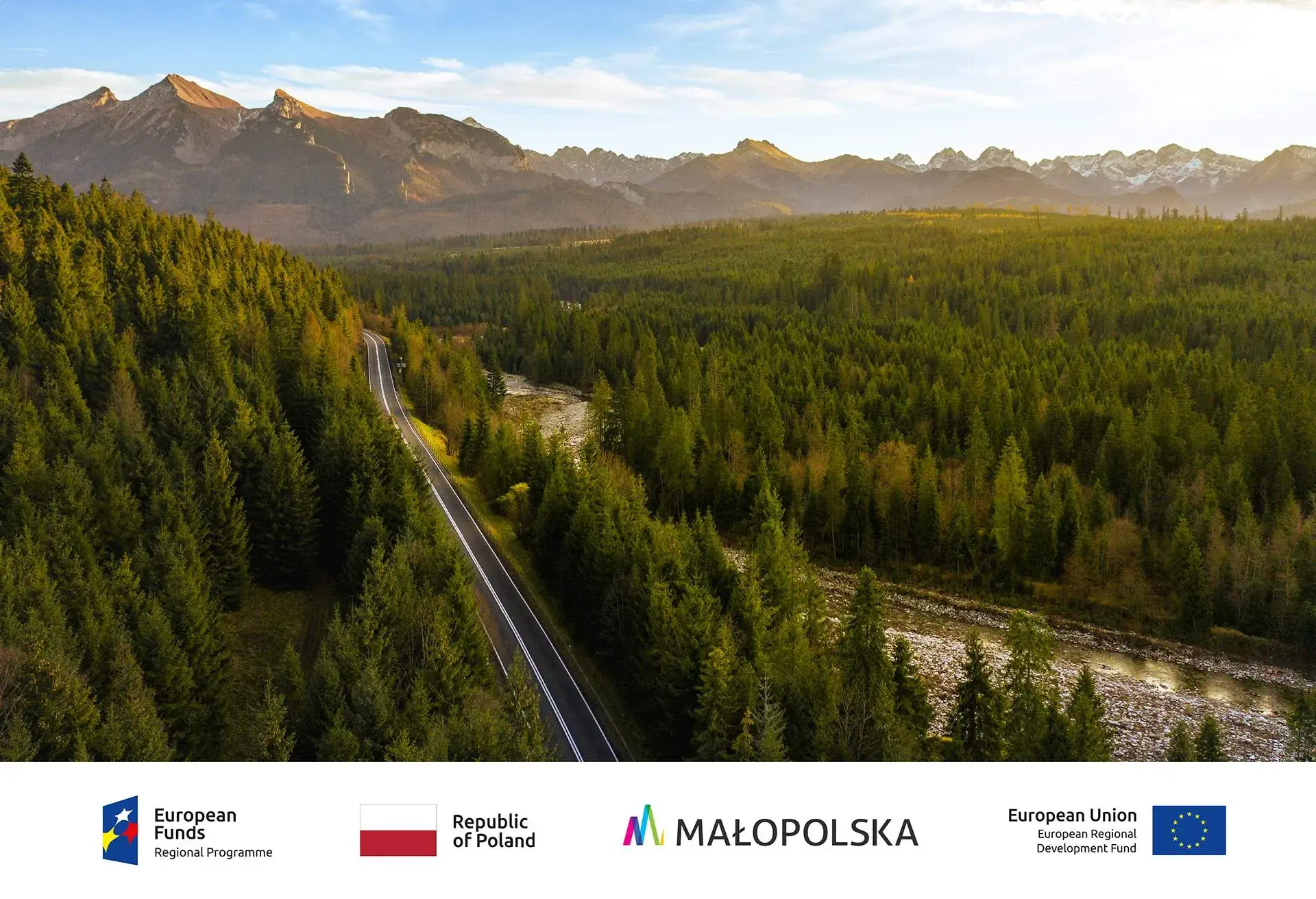
Małopolska, with its resort towns, extensive outdoor activities and an unrivalled heritage, is just a taste of what there is to explore in Poland.
Images contained within this article are copyright of Archives of Marshal’s Office of the Małopolska Region

